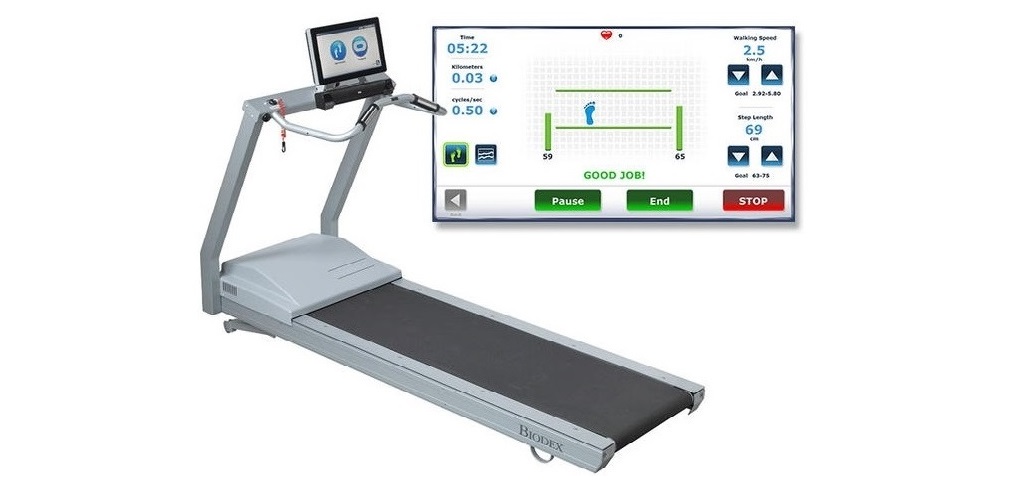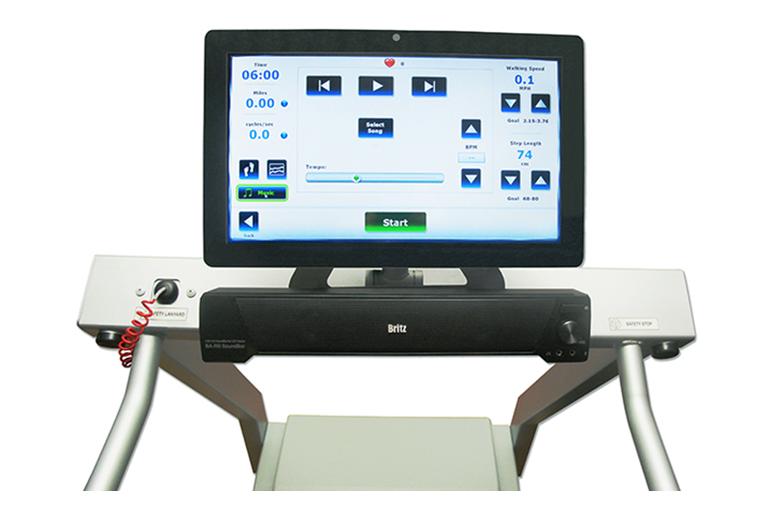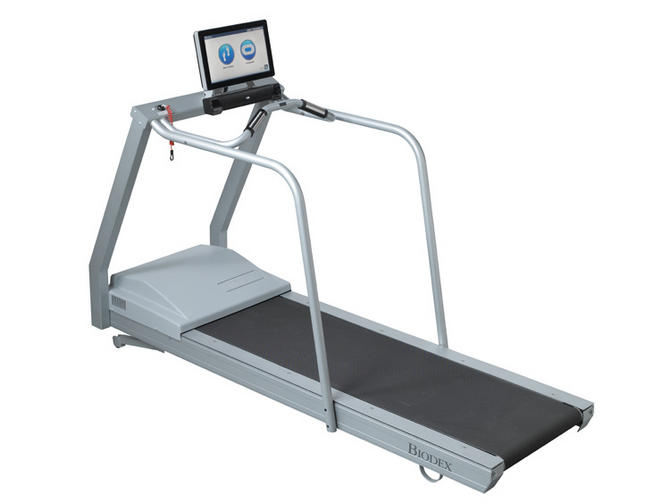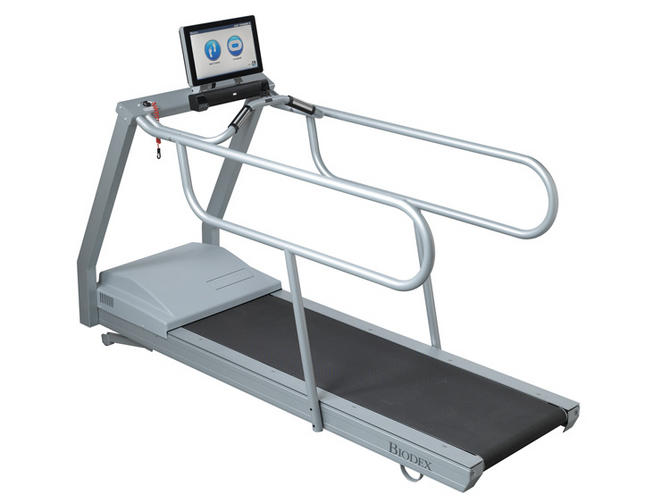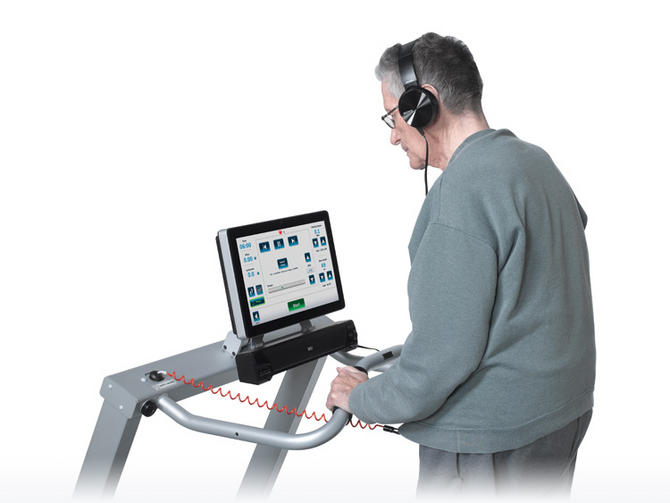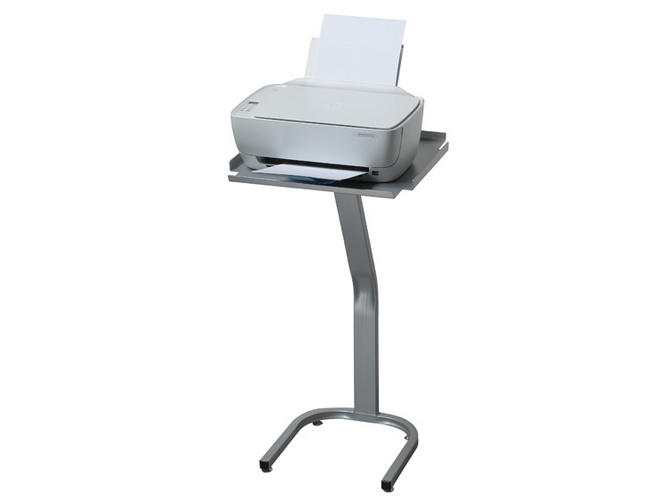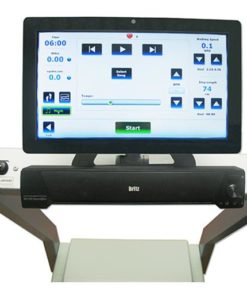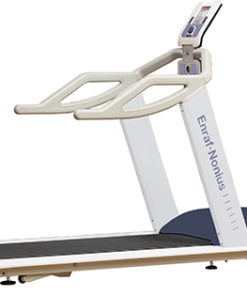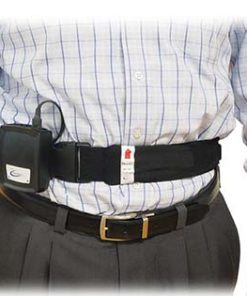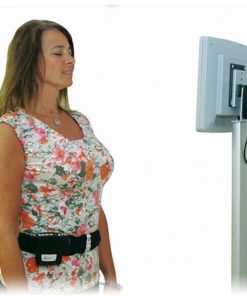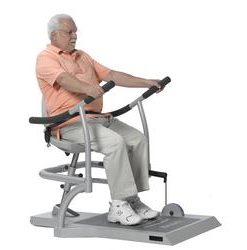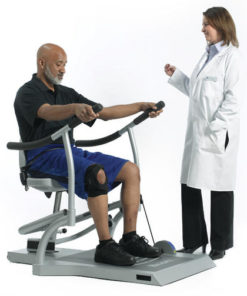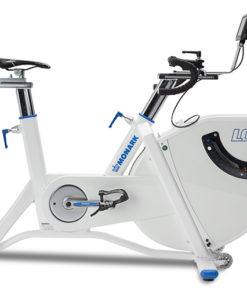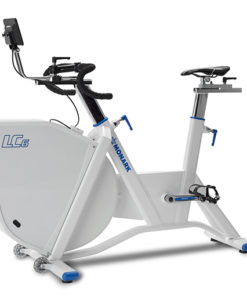- Quiet, non-intimidating
- Audio and Visual Biofeedback of Step Length and Step Speed
- Step length, step speed and right-to-left time distribution (step symmetry) are directly addressed
- 15.6″ touchscreen display in real time and documented in an easy to read histogram
- Various phases of recovery for profound, moderate and minimal neurological impairments
Music Therapy
Working in conjunction with The Center for Music Therapy, Austin, TX, the Gait Trainer 3 offers an integrated starter library of music therapy-informed compositions and allows music therapists to incorporate their own. The right music, the correct beats per minute (bpm) and gait repetition help reinforce neuroplasticity and get patients better, faster.
Music tempo, or beats-per minute (bpm), can be managed to influence certain gait characteristics. Walking, or gait cycle time, can be described as steps-perminute (spm). Biodex Gait Trainer 3 has the capability to control belt speed (individual’s walking speed) in units of spm (gait cycle time).

